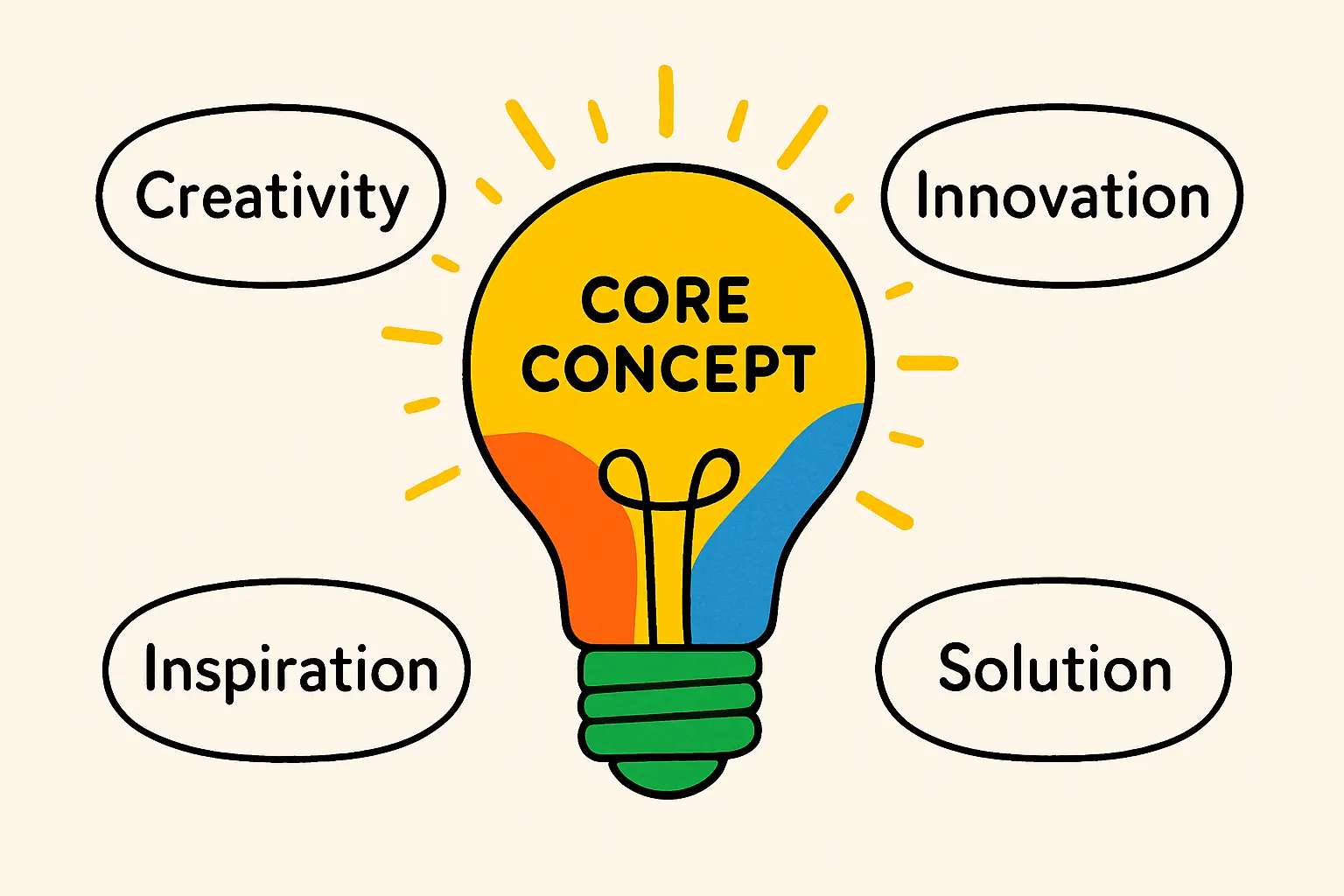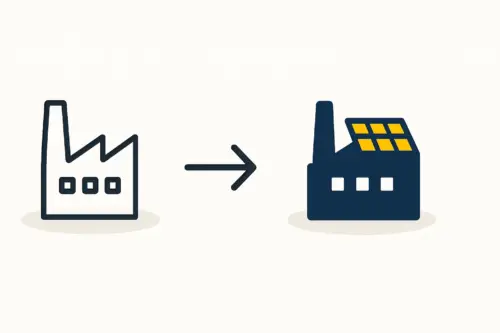While the global solar market is often defined by massive factories producing millions of standardized panels, a valuable and growing opportunity exists in specialized manufacturing. For entrepreneurs entering the industry, competing on volume is seldom a viable strategy. Instead, focusing on high-value, niche applications such as agricultural photovoltaics (Agri-PV) and building-integrated photovoltaics (BIPV) offers a more strategic path to profitability.
This article examines a turnkey project in the Aegean region where a flexible production line was established to manufacture custom-sized solar modules. It highlights how the combination of expert engineering from J.v.G. Technology and the strategic market guidance of the Thoma family, local business developers, led to a successful enterprise, even without prior solar manufacturing experience.
The Strategic Shift: From Standard Modules to Niche Applications
The solar module market has become highly commoditized. Large-scale manufacturers leverage economies of scale to produce standard 60- and 72-cell panels at prices that are difficult for new, smaller players to match. However, this focus on standardization leaves a critical market gap.
Agri-PV, the dual use of land for both agriculture and solar energy generation, requires modules with specific dimensions, light transmissivity, and durability to optimize crop growth and energy yield. Similarly, BIPV demands modules that also function as building materials—such as facades, skylights, or roofing—requiring custom sizes, colors, and framing to meet architectural specifications.
Market analysis suggests these niche sectors are poised for significant expansion, driven by demand for land-use efficiency and sustainable building design.
Project Profile: A Turnkey Solution in the Aegean
Recognizing this opportunity, the Thoma family, entrepreneurs with a strong background in regional business but new to photovoltaics, sought a way to enter the solar industry. Their primary challenge was to develop a business model that was both technologically sound and commercially viable in a competitive landscape.
The solution was a turnkey production facility engineered for flexibility rather than sheer volume. This approach allows the factory to serve local agricultural and construction clients who require tailored solar solutions that cannot be sourced from mass producers.
Drawing on its experience with similar turnkey projects, J.v.G. designed a 25 MW line to balance investment costs with sufficient capacity for regional market leadership. The project timeline targeted full operation in under ten months, with a skilled team of approximately 25 technicians and operators.

Core Components of the Flexible Production Line
A production line designed for custom modules requires specific machinery choices that prioritize adaptability over maximum speed. The key difference lies in the ability to quickly and efficiently change production parameters for different module designs.
Ready to make big Profits?
The solar Industry is Booming
WE HELP NEWCOMERS to the solar industry start their own solar module production line. Customers can make BIG PROFITS by selling modules and finding investors, without wasting money and time on things they don't need!
Adaptable Stringer and Layup Stations
The heart of any module production line is the stringer, the machine that solders individual solar cells together to form strings. While fully automated stringers are ideal for high-volume production of a single module type, a semi-automated stringer offers the flexibility needed for custom work. It allows operators to handle various cell sizes and create non-standard string lengths with minimal changeover time. For those new to the terminology, understanding what a solar module stringer machine is provides foundational context for this critical process step.
Following the stringer, the manual or semi-automated layup station allows operators to precisely place cell strings on glass, accommodating unique layouts required for architecturally integrated or light-permeable agricultural panels.
Advanced Lamination for Specialized Modules
The lamination process is critical to the long-term durability and performance of any solar module. For specialized applications, the laminator must be versatile enough to handle different material combinations. This versatility is essential to producing both robust glass-glass modules, often preferred for Agri-PV due to their enhanced durability, and aesthetically refined glass-backsheet panels for BIPV applications. The technical difference between glass-glass and glass-foil solar modules has significant implications for a module’s weight, longevity, and suitability for specific environments.
Precision Framing and Finishing
Standard solar panels typically use a universal silver or black aluminum frame. BIPV projects, however, often require frames that match a building’s color scheme or structural system. A flexible production line therefore requires framing stations that can handle custom dimensions and apply specialized finishes, ensuring the final product integrates seamlessly into the building envelope.

The Role of Engineering and Strategic Consulting
Successfully launching a specialized manufacturing facility requires more than just the right equipment. It demands a blend of deep technical expertise and astute market strategy.
J.v.G.’s Engineering and Turnkey Implementation
J.v.G. Technology provided the end-to-end engineering solution, starting with a factory layout designed to optimize material flow for variable production runs. This included the selection, procurement, and integration of machinery chosen specifically for its flexibility and reliability. The turnkey service included on-site installation, commissioning of the entire line, and comprehensive training for the local workforce, ensuring a smooth transition from construction to full-scale operation.
The Thoma Family’s Market-Entry Strategy
While J.v.G. managed the technical implementation, the Thoma family provided the crucial local market intelligence. Their team conducted feasibility studies to identify strong regional demand from two key sectors: the extensive network of commercial greenhouses requiring custom light-transmitting solar roofs, and the booming tourism industry driving construction of hotels and resorts seeking innovative, sustainable building materials.
This client-side strategic planning ensured that the factory’s output was perfectly aligned with tangible market needs from day one. This partnership model validates a core principle of pvknowhow.com: business professionals do not need to be solar experts to succeed, provided they have a reliable technical partner to execute their vision.
Key Outcomes and Business Impact
The Aegean facility is now a leading regional supplier of specialized solar modules. It provides custom solutions for agricultural businesses looking to improve land efficiency and for architects designing energy-producing buildings.
By manufacturing locally, the company offers its clients significant advantages, including reduced transportation costs, faster lead times for custom orders, and responsive after-sales support.
The project serves as a compelling model for how entrepreneurs in developing or emerging markets can successfully enter the solar manufacturing space. By avoiding direct competition with global giants and focusing on unmet local needs, they can build a profitable and sustainable business.

Frequently Asked Questions (FAQ)
What is the typical investment for such a specialized production line?
The investment for a flexible 20–50 MW turnkey line typically falls between €1.5 million and €3.5 million. The final figure depends on the level of automation, specific machines chosen, and the scope of engineering and training services. The general cost to start a solar panel factory provides a broader overview of investment considerations.
How much space is required for a 25 MW flexible production line?
A well-designed 25 MW line, including space for raw material storage and finished goods, generally requires a building of approximately 2,000 to 2,500 square meters (around 21,500 to 27,000 square feet).
Can this type of line also produce standard modules?
Yes, the inherent flexibility of the machinery allows it to produce standard-sized modules. However, its competitive advantage and highest profitability are realized when producing the custom, high-margin products that are its specialty.
What level of automation is appropriate for this scale?
For a flexible line of this capacity, a semi-automated approach is often optimal. It balances labor costs with the need for adaptability, avoiding the high capital expenditure and rigidity of a fully automated line. Critical processes like cell stringing and lamination benefit from automation, while others, like layup and framing, can remain manual or semi-automated to accommodate custom designs.
Conclusion: A Blueprint for Niche Market Success
The success of the Aegean Agri-PV and BIPV module factory demonstrates a clear and replicable blueprint for new entrants in the solar manufacturing industry. By identifying and serving niche markets with specialized, high-quality products, entrepreneurs can build thriving businesses that contribute to local economic development and energy independence.
This strategic approach, which pairs local business acumen with expert turnkey engineering, mitigates risk and accelerates the path to profitability. For investors and business professionals considering this path, the next logical step is to explore financial planning, site selection, and the certification process required to bring a solar module factory from concept to reality.






